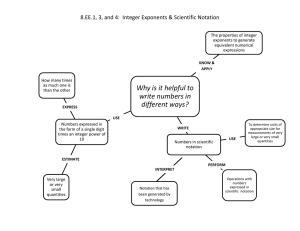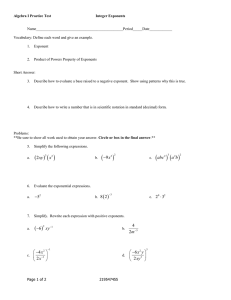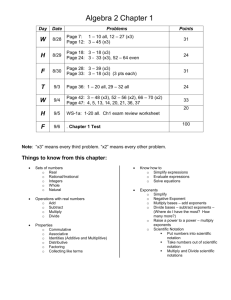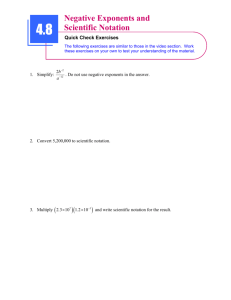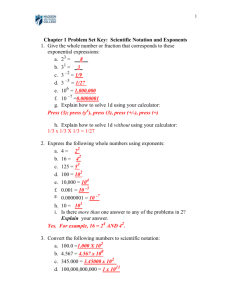Math 1010 - Lecture 16 Notes 1 Rules for Exponentials Dylan Zwick
advertisement
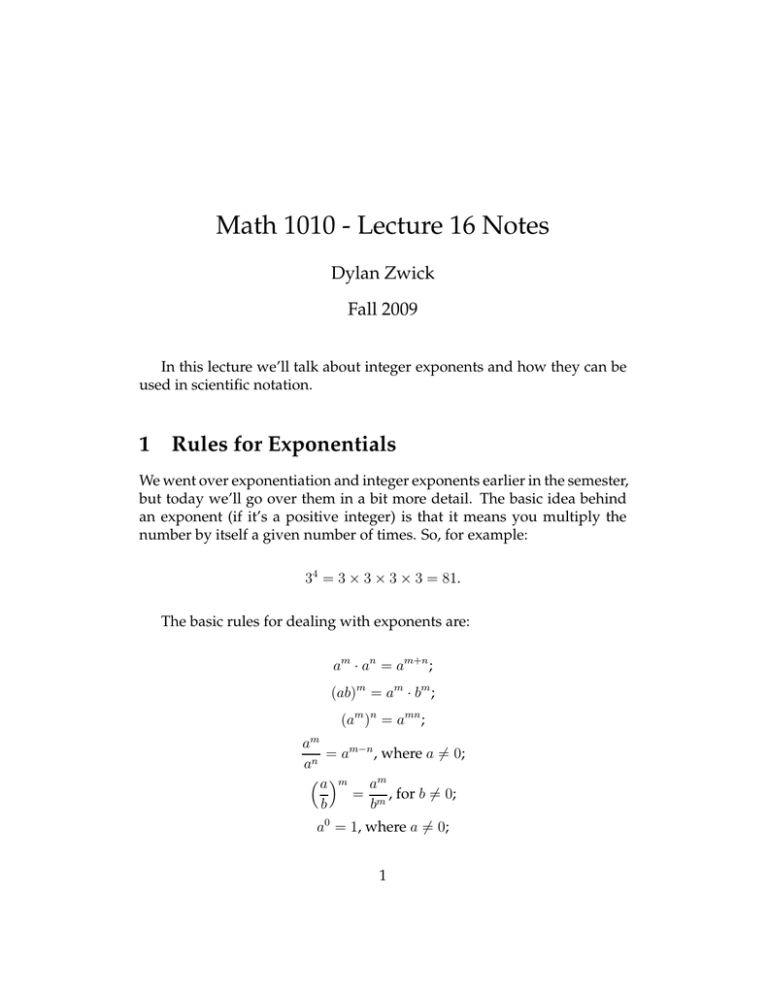
Math 1010 - Lecture 16 Notes Dylan Zwick Fall 2009 In this lecture we’ll talk about integer exponents and how they can be used in scientific notation. 1 Rules for Exponentials We went over exponentiation and integer exponents earlier in the semester, but today we’ll go over them in a bit more detail. The basic idea behind an exponent (if it’s a positive integer) is that it means you multiply the number by itself a given number of times. So, for example: 34 = 3 × 3 × 3 × 3 = 81. The basic rules for dealing with exponents are: am · an = am+n ; (ab)m = am · bm ; (am )n = amn ; am = am−n , where a 6= 0; n a a m am = m , for b 6= 0; b b a0 = 1, where a 6= 0; 1 1 ; am m b = . a a−m = a −m b So, for example, we can use these rules to simplify expressions. Examples Simplify the following: 1. (3y)3(2y 2). 2. −18m3 n6 . −6mn3 3. 5−1 . 52 4. (53 · 5−4 )−3 . 2 2 Scientific Notation Frequently in scientific situations we need to deal with really big numbers (like the number of atoms in a mole), or really small numbers (like the mass of an electron). In these situations it can be cumbersome to write out all the numbers, so to simplify things we use scientific notation. The idea is that if we have a few numbers followed by a large number of zeros, we can rewrite it as just those few numbers multiplied by 10 to the appropriate power. So, for example, we would write: 2, 700, 000, 000, 000, 000 = 2.7 × 1015 . The term on the right being much easier to work with. The same idea works with very small numbers, where we have a large number of zeros to the right of the decimal before the number. For example, we’d write: 0.00000076 = 7.6 × 10−7 . The basic format is a number, a decimal, a few more numbers, all multiplied by 10 to some integer power. Examples Rewrite the following numbers in scientific notation. 1. 47, 620, 000. 2. 841, 000, 000, 000. 3 3. 0.0000000000692. 4. Light Year: 9, 460, 800, 000, 000km. 3 Multiplying Numbers in Scientific Notation To multiply numbers in scientific notation, you just multiply the leading numbers, add the exponents, and then convert if the product of the leading numbers is not between 0 and 10. Examples Calculate the following products: 1. (3 × 104 ) · (7 × 10−2 ). 2. (3.2 × 105 ) · (5 × 102 ). 4 3. (3.5 × 102 ) · (5 × 10−18 ). 5
